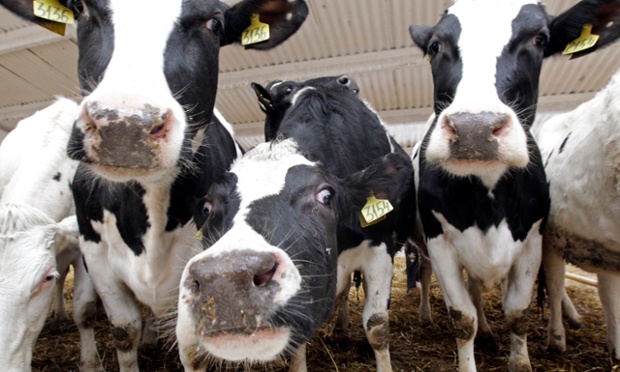Breakthrough as scientists in China produce genetically modified animals that are more difficult to infect with tuberculosis.
Scientists have created the first tuberculosis-resistant cattle using genetic engineering techniques. The advance could pave the way for genetically modified farm animals that would be automatically protected against disease, reducing the need for culls of infected herds and the blanket use of antibiotic drugs.
The study is the first to show that when cattle are genetically modified to carry a protective mouse gene, they become more difficult to infect and are largely shielded from the damaging symptoms of the disease.
Professor Bruce Whitelaw, of the Roslin Institute at the University of Edinburgh, said: “The world faces unprecedented population growth on a backdrop of competing pressure on agricultural land and resources. Society needs to embrace many strategies to address this global challenge, both traditional and new, with many seeing genetic engineering as contributing to the much needed solutions.”
Bovine TB is endemic to many countries and the traditional approach to controlling the disease has been to cull infected herds. Badgers, which are thought to transmit the disease to cattle, have also been culled in field trials in Britain. However, the trials have been fiercely opposed by conservation groups and and some experts concluded that too few badgers had been killed to make the strategy an effective way of reducing the prevalence of the disease on farms. In 2010-2011, bovine TB cost the government £152m, according to the Department for Environment, Food and Rural Affairs (Defra).
In the latest study, published in the journal Proceedings of the National Academy of Sciences, scientists from the Chinese agriculture ministry created 23 genetically modified calves, 13 of which survived into adulthood. The team used a gene editing tool, known as TALEN, which allows scientists to delete naturally occurring genes and insert new ones with a high degree of precision.
In laboratory tests, they showed that the Mycobacterium bovis bacterium, which causes TB, multiplied far less effectively in the presence of immune cells taken from the GM cattle, which had been given a mouse gene that was known to be protective against TB.
The scientists deliberately introduced the TB bacteria into the lungs of three of the GM cattle and three control cattle and compared the effects. One of the GM cattle showed no sign of the illness and the other two showed far fewer lesions than the control cattle in their lungs, spleen and liver, when they were dissected several weeks later.
In a second transmission test, nine GM cattle and nine control cows were housed with infected animals. Six of the GM cattle were not infected and the other three again showed minimal symptoms compared with all nine of the control animals, whose lungs showed extensive damage.
Professor Mike Coffey, a livestock expert at Scotland’s Rural College, said: “This doesn’t produce completely TB-resistant cows, but the aim is to raise the general resistance. This would slow down any spread of the disease and slowly reduce the national level in herds.”
Scientists in Britain have been working towards the same goal using traditional breeding methods, but that requires breeding programmes spanning many generations. “The GM approach cuts out the middle man,” Coffey said.
The scientists found that the introduction of the mouse gene, called SP110, did not appear to have any “spillover” effects on the activity of the cattle’s natural genes. The mouse gene was also passed on to the offspring of the transgenic cattle, suggesting that it could be introduced in one generation without the need for constant genetic manipulation of livestock.
Professor Heiner Niemann, head of the Institute of Farm Animal Genetics at Friedrich-Loeffler-Institut, Germany, said: “These findings are another step towards the creation of disease-resistant livestock animals based on advanced genetic tools. Whether this approach protects cows against TB infection when exposed to high doses of the pathogen remains to be determined.”
Currently, the only genetically modified animals in Britain are laboratory animals, but there are a growing number of practical applications on the horizon. A US company, Aquabounty, has developed a hybrid salmon species designed to grow quicker than traditional fish. Scientists in New Zealand have genetically modified cows to produce milk that is less likely to cause allergic reactions, while another group in China has engineered cows to produce milk with similar properties to human breast milk.
Source: The Guardian
